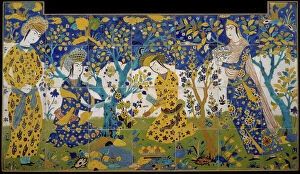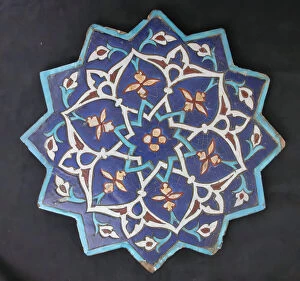Ceramics Tiles Collection
Ceramic tiles have long been an integral part of Persian art and culture, showcasing the immense talent and creativity of unknown craftsmen throughout history
All Professionally Made to Order for Quick Shipping
Ceramic tiles have long been an integral part of Persian art and culture, showcasing the immense talent and creativity of unknown craftsmen throughout history. From reciting poetry in a serene garden during the first quarter of the 17th century to intricate twelve-pointed star-shaped tiles dating back to A. H. 846 / A. D. 1442-43, these masterpieces transport us to a time when beauty was immortalized in clay. One cannot help but marvel at the star- and hexagonal-tile panel from late 13th-14th century Iran, where geometric patterns intertwine with delicate craftsmanship, leaving us in awe of their precision. Equally captivating is the fragment of a glazed tile inscription from Iran's 12th-13th century, hinting at stories untold and secrets whispered through time. Intriguingly dated A. H. 722 / A. D. 1322-23, the tile from a Mihrab takes us on a spiritual journey as we admire its intricate design that once adorned sacred spaces. The panel composed with tiles shaped like eight-pointed stars and crosses showcases not only artistic brilliance but also cultural diversity prevalent in Iran during the years spanning between1260-70. The square tile from late 13th-century Iran captivates with its simplicity yet undeniable elegance – reminding us that even amidst complexity, beauty can be found in minimalism. Cross-shaped tiles from various periods further highlight religious influences on Persian ceramic artistry while offering glimpses into historical narratives waiting to be explored. Tiles featuring niche designs provide insight into architectural elements prevalent during different eras; whether it's dated A. H. 712/AD1312-13 or A. H860/AD1455-56 – each piece tells its own story within the larger tapestry of Iranian heritage.
















